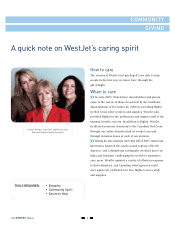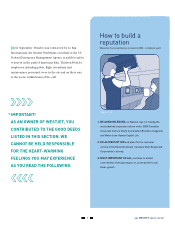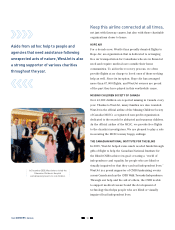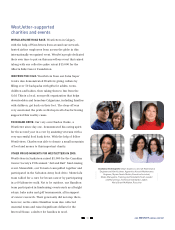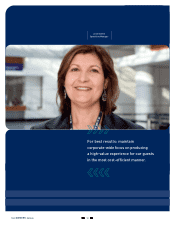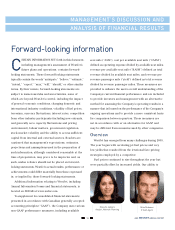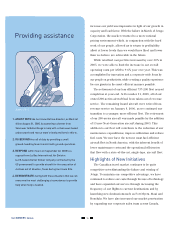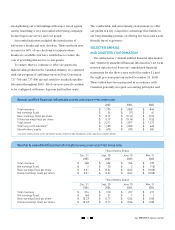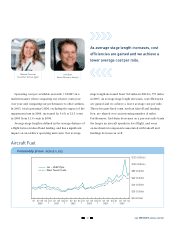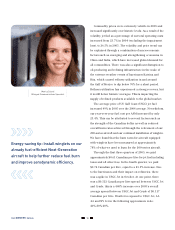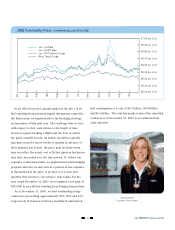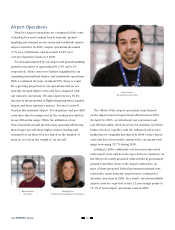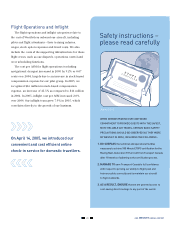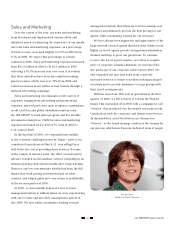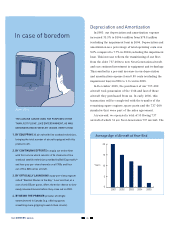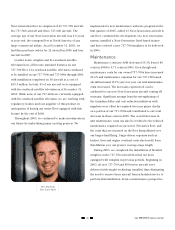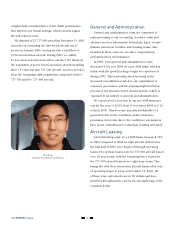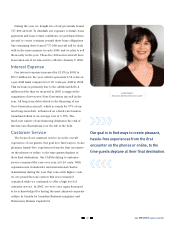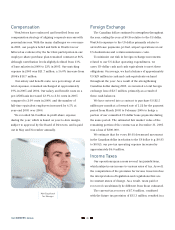Westjet 2005 Annual Report Download - page 20
Download and view the complete annual report
Please find page 20 of the 2005 Westjet annual report below. You can navigate through the pages in the report by either clicking on the pages listed below, or by using the keyword search tool below to find specific information within the annual report.
18
YOUR OWNERS’ MANUAL
Commodity prices were extremely volatile in 2005 and
increased significantly over historic levels. As a result of the
volatility, jet fuel as a percentage of our total operating costs
increased from 23.7% in 2004 (excluding the impairment
loss), to 26.5% in 2005. The volatility and price trend can
be explained through a combination of macroeconomic
factors such as emerging and strengthening economies in
China and India, which have increased global demand for
all commodities. There was also a significant disruption to
oil-producing and refining infrastructure in the wake of
the extreme weather events of hurricanes Katrina and
Rita, which caused refinery utilization in and around
the Gulf of Mexico to dip below 70% for a short period.
Refinery utilization has experienced a strong recovery, but
it is still below historic averages. This is impacting the
supply of refined products available to the global market.
The average price of US Gulf Coast (USGC) jet fuel
increased 49% in 2005 over the 2004 average. Nevertheless,
our year-over-year fuel cost per ASM increased by only
23.4%. This can be attributed to several factors such as
the strength of the Canadian dollar as well as reduced
overall burn rates achieved through the retirement of our
200-series aircraft and our continued installation of winglets.
We have found that the burn rates for aircraft equipped
with winglets have been measured at approximately
78% of what we used to burn for the 200-series aircraft.
Through the first three quarters of 2005, we paid
a
pproximately
$0.
61 Canadian per litre for jet fuel including
taxes and all other fees. In the fourth quarter, we paid
$0.74 Canadian per litre, equal to a 21.3% increase. Due
to the hurricanes and their impact on refineries, there
was a spike in USGC Jet in October. At one point, there
was a $0.512 Canadian per litre spread between USGC Jet
and Crude; this is a 440% increase over 2005’s overall
average spread between USGC Jet and Crude of $0.117
Canadian per litre. WestJet is exposed to USGC Jet, LA
Jet and NY Jet in the following approximate ratio:
40%:20%:40%.
Monica Schael
Bilingual Communications Specialist
Energy-saving tip: Install winglets on our
already fuel-efficient Next-Generation
aircraft to help further reduce fuel burn
and improve aerodynamic efficiency.


